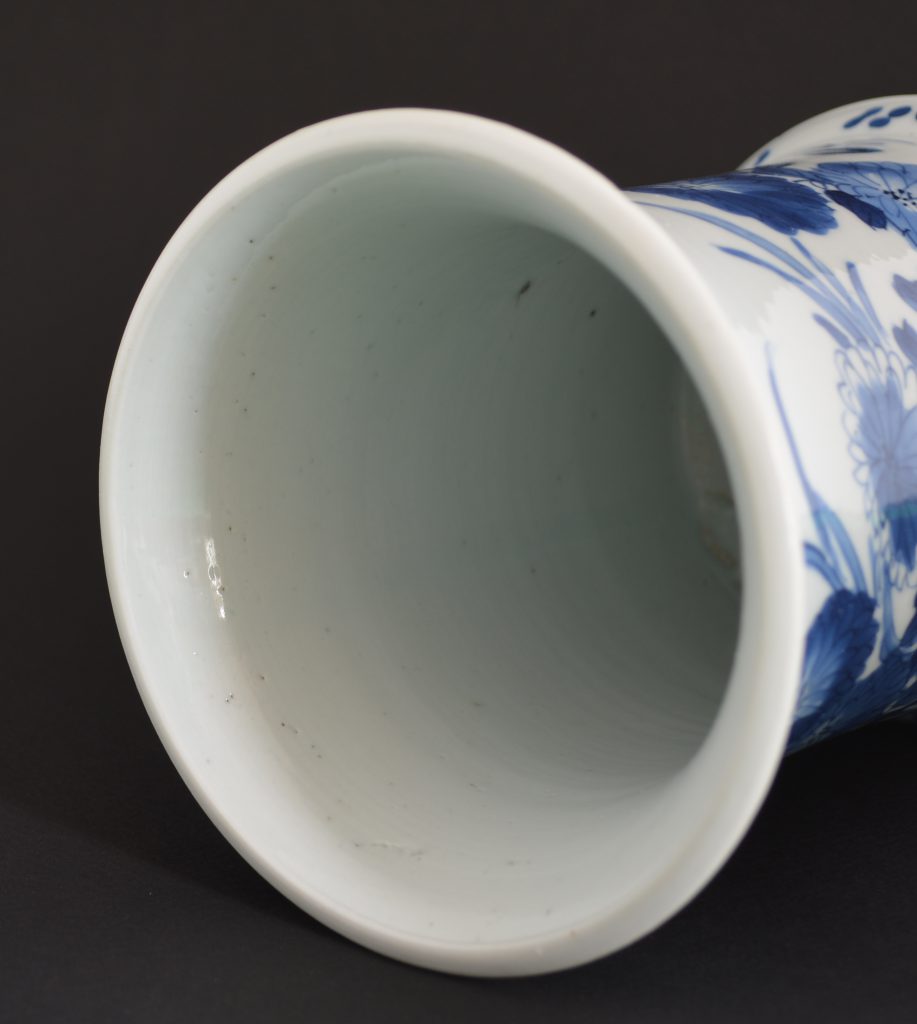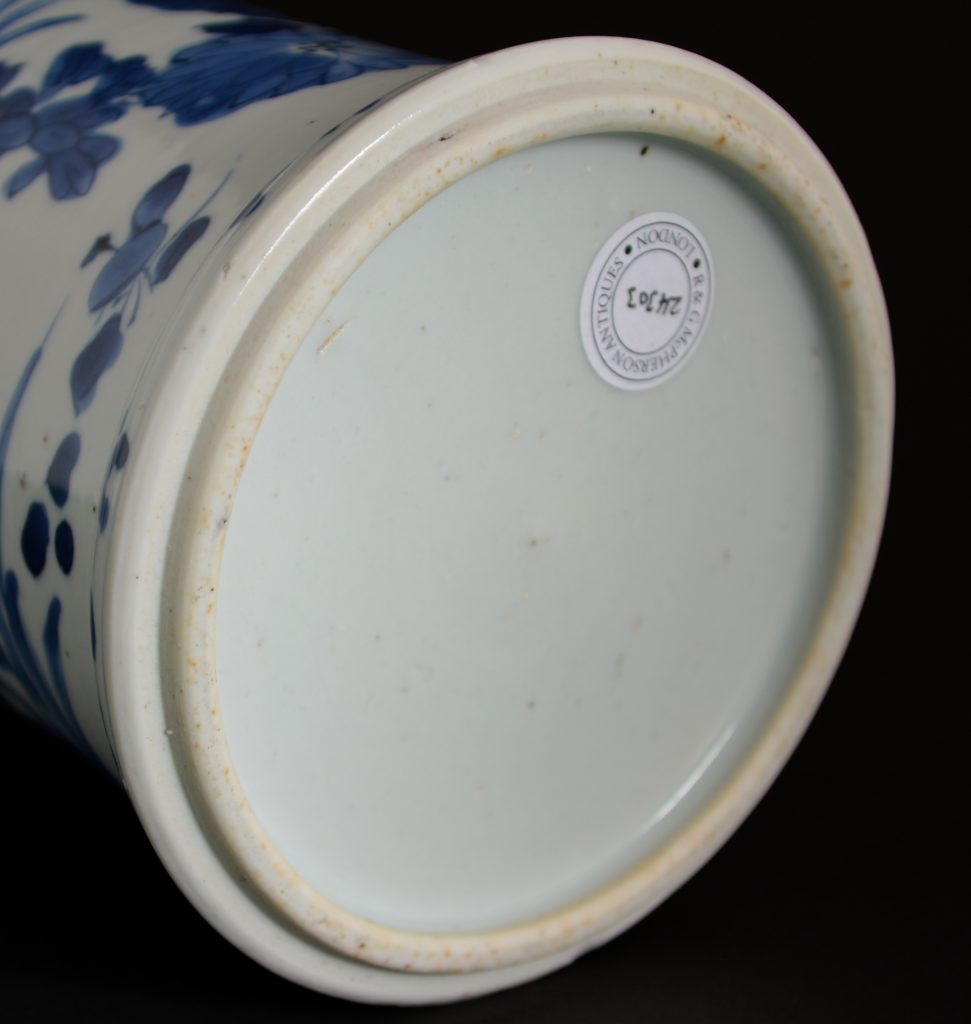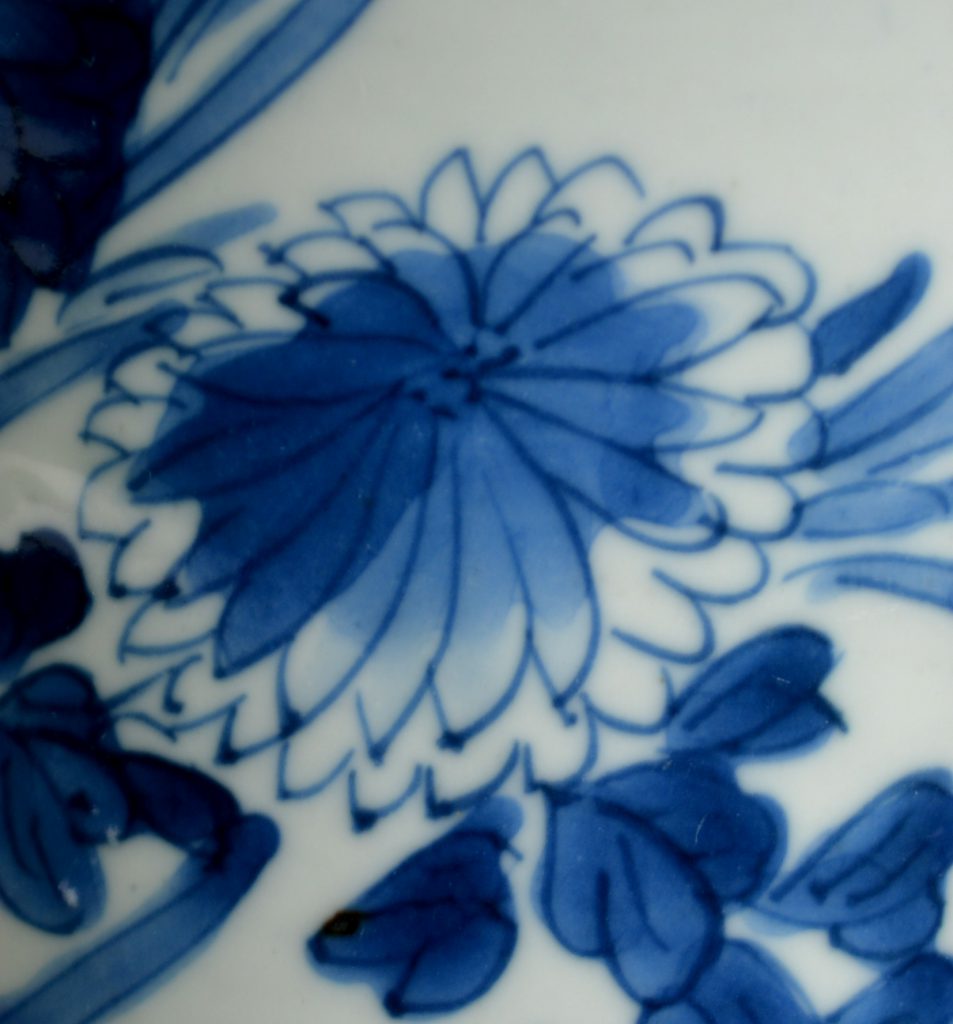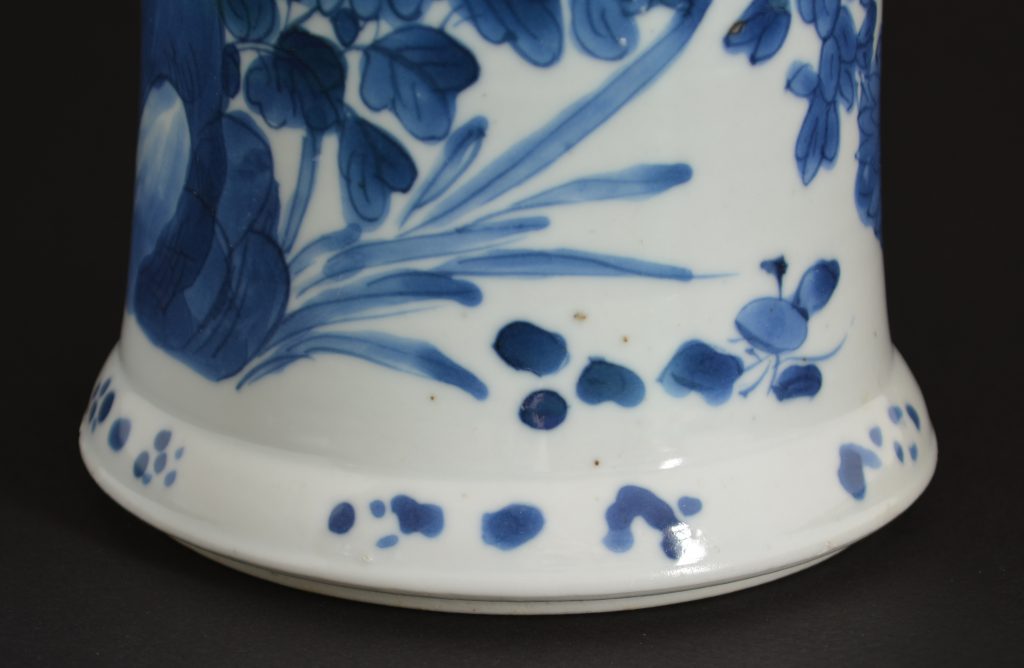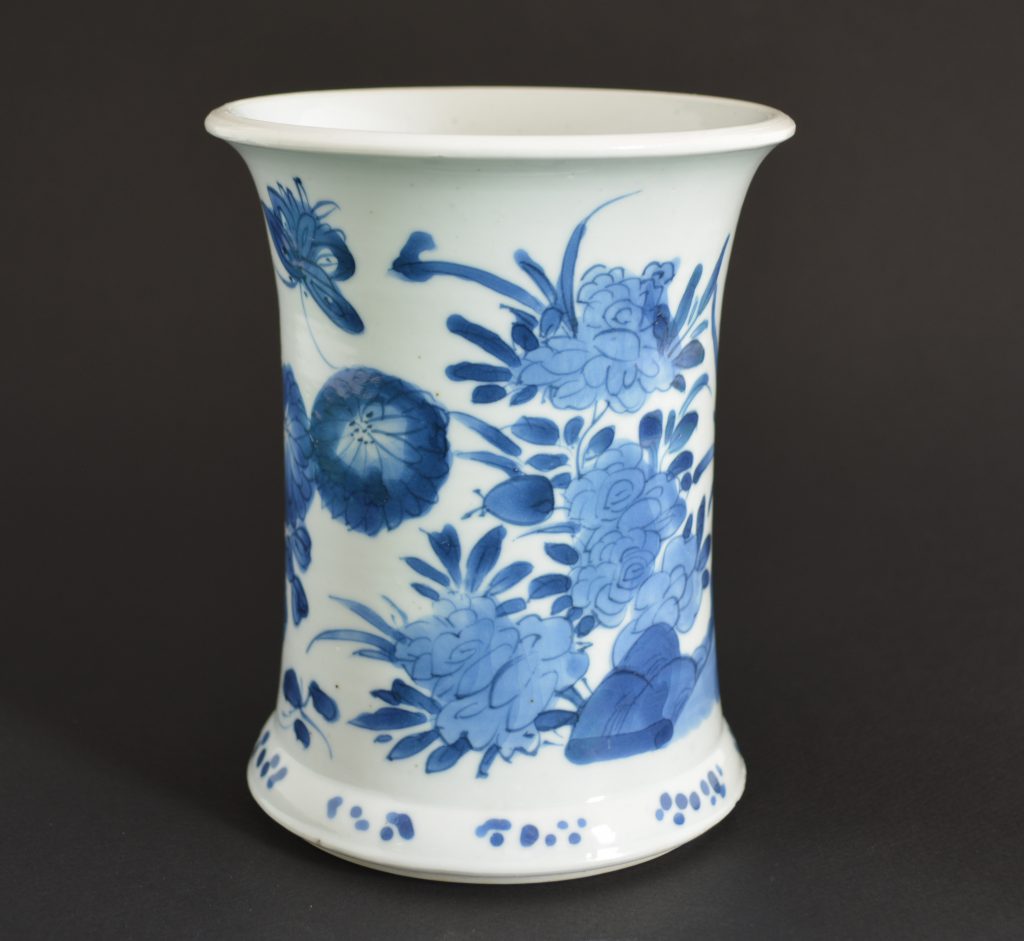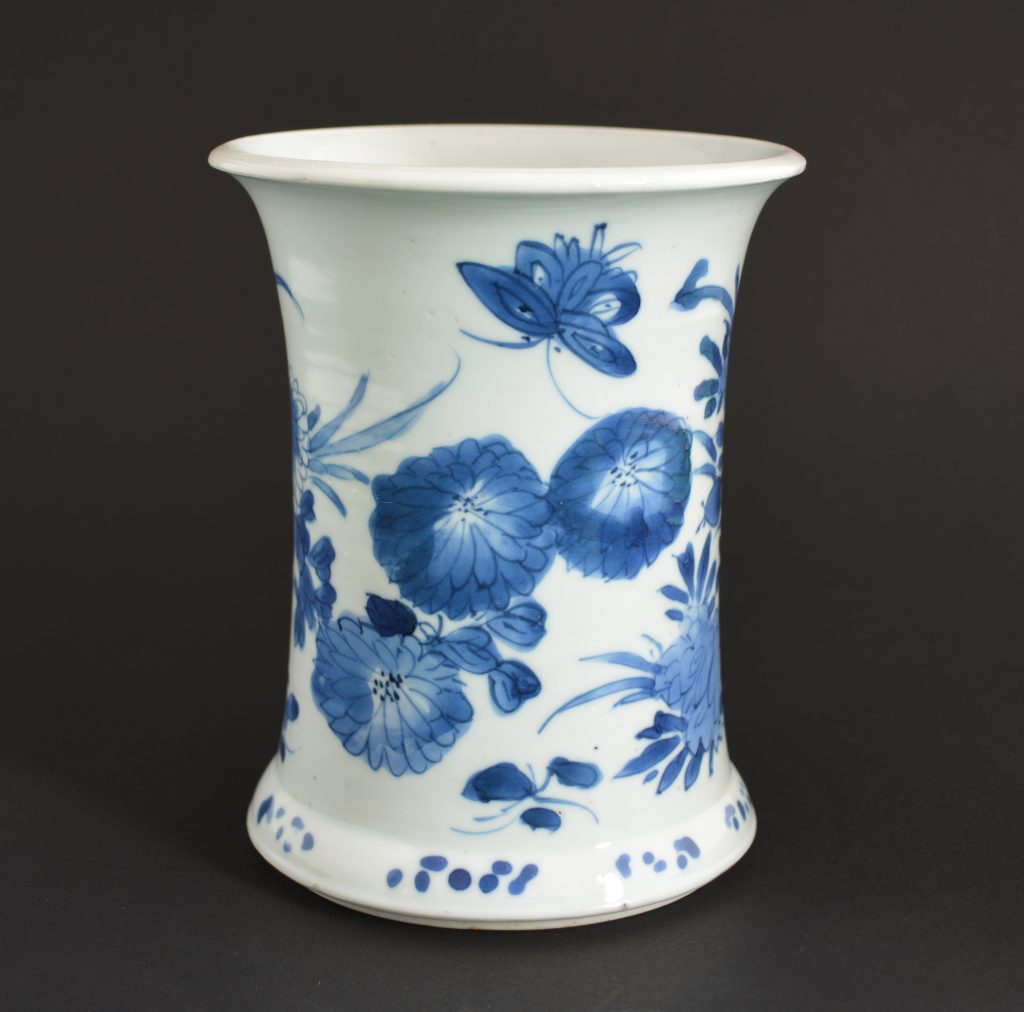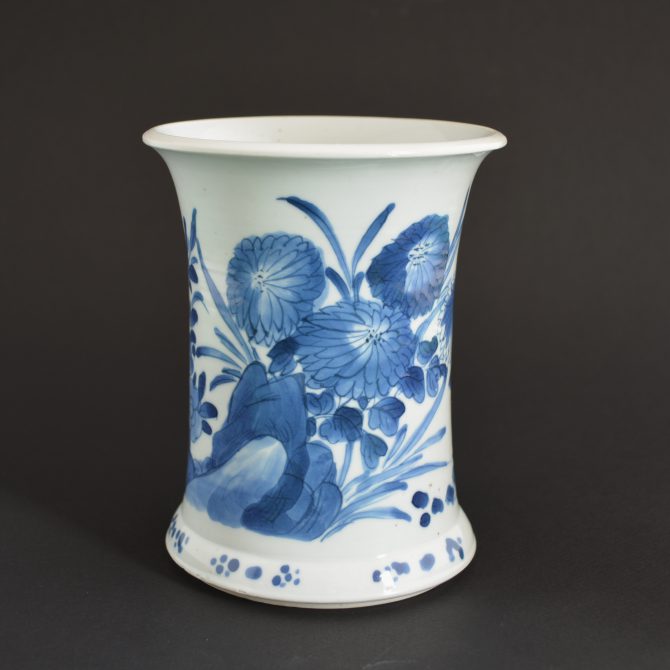
KANGXI 1662 – 1722 Chinese Taste Porcelain
A Kangxi Blue and White Porcelain Bitong (Brushpot) c.1690-1700. The Waisted Cylindrical Form with a Lower `Skirt` Sits on a Recessed Footrim. The Decoration Consists of Large Flowered Chrysanthemum and Peony Growing Between Rocks with a Butterfly Above. The Border is of Dots Painted with a Wet Brush.
SOLD
- Condition
- In excellent condition, the lower edge just above the unglazed foot has minor glaze chips.
- Size
- 14 (5 1/2 inches)
- Provenance
- Provenance : The Gustav Leonhardt Collection from The Bartolotti House Amsterdam. Gustav Leonhardt (1928-2012) was born in `s-Graveland, North Holland and studied organ and harpsichord from 1947 to 1950 with Eduard Müller at the Schola Cantorum Basiliensis in Basel. In 1950, he made his debut as a harpsichordist in Vienna, where he studied musicology. He was professor of harpsichord at the Academy of Music from 1952 to 1955 and at the Amsterdam Conservatory from 1954. He was also a church organist. Leonhardt performed and conducted a variety of solo, chamber, orchestral, operatic, and choral music from the Renaissance, Baroque and Classical periods. The many composers whose music he recorded as a harpsichordist, organist, clavichordist, fortepianist, chamber musician or conductor. See Wikipedia for more details.
- Stock number
- 24303
Information
Brushpots / Bitong :
Bitong, brushpots are not found in 17th or early 18th century European inventories unlike some other ceramic forms which fore fill a specific Chinese function. Blanc de chine `libation cups`, were for example, made for drinking wine in China but they were imported in large numbers to the West. There curious forms appealed to Western tastes and were used in European displays or converted with the addition of a gilt bronze handle to become a bonbon dishes. Brushpots on the other hand seem to have been made exclusively for the Chinese domestic market and perhaps also for Chinese scholars in South East Asia. Bitong are an essential part of literati`s desk equipment, what is often referred to as a scholars desk. Other scholarly items for the desk might include a brush-rest, inkstone (for grinding the dry ink) a water pot for the water to add to the inkstone, a brushwasher as well as a table screen. Like other scholar`s objects they were made in a diverse range of material from natural gnarled branches of trees, highly polished wood, jade, bamboo to name but a few. Brush-rests were used for keeping the brush from making stains on the scholar`s table in between use while the scholar was working, while brush pots were used for storing the brushes when they were not being used.
